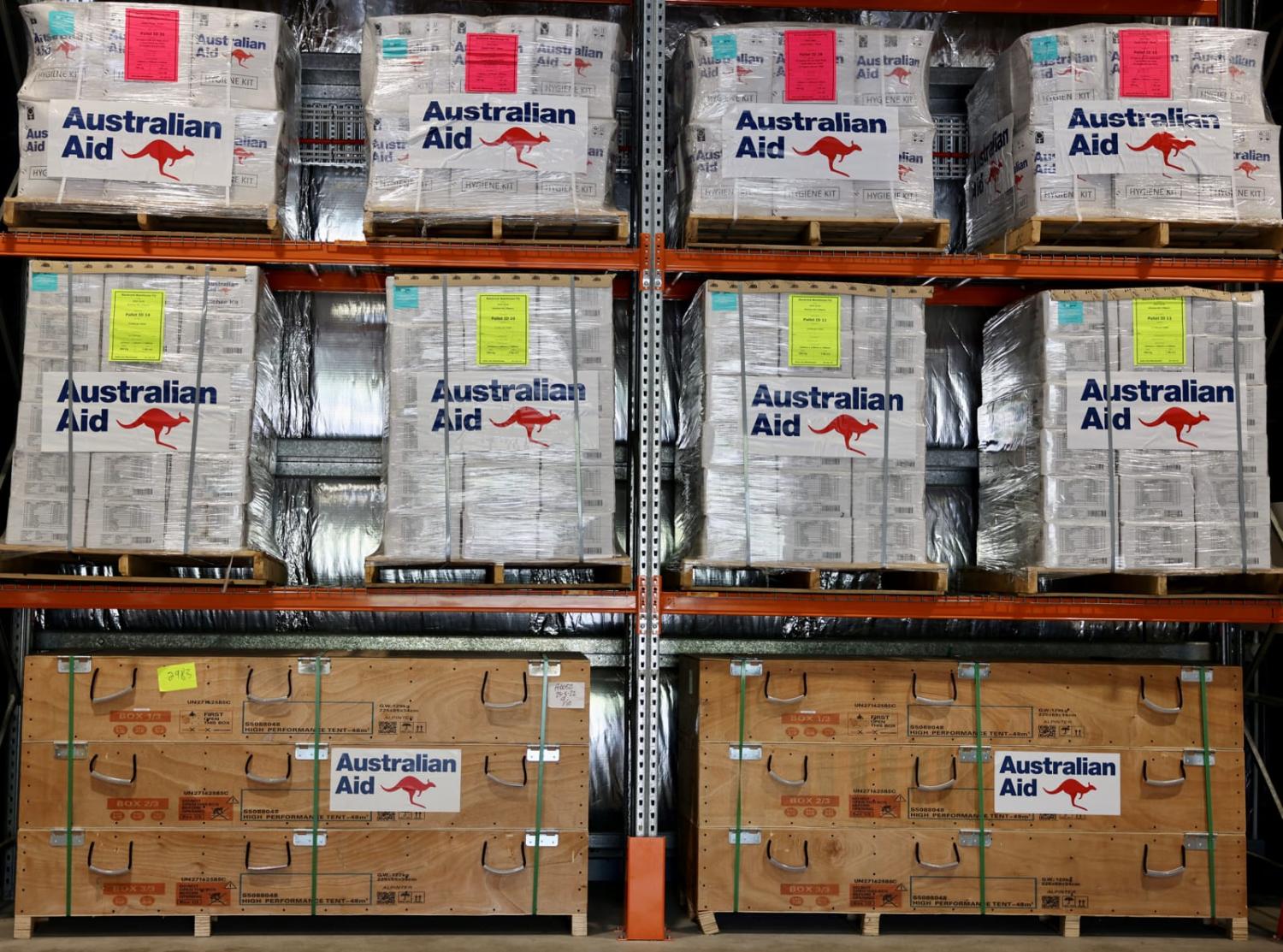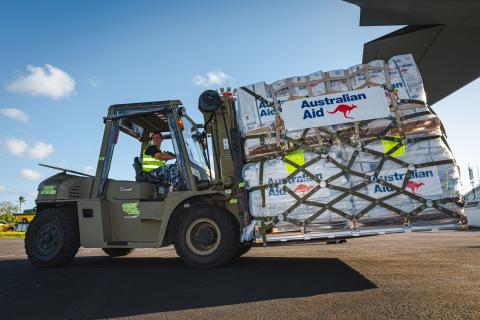Labor came to office promising to rebuild Australia’s development program. In government, it has commissioned a new international development policy and a review into the use of financing instruments beyond traditional aid.
The next federal budget, to be handed down on Tuesday, will be a critical moment to demonstrate its development agenda. In a world facing multiple crises, there are strong policy reasons for Australia to not only rebuild but expand and modernise its development program.
The need is clearly high. Covid-19, conflict, and climate have coalesced into what the World Bank has described as a crisis of development. Poverty reduction has stalled, food insecurity has risen, the UN Sustainable Development Goals have moved further out of reach, and the costs of global warming continue to mount.
Geostrategic imperatives are also relevant. Development assistance has a role to play in the growing competition for influence with China. But this cannot simply be in a reactionary or transactional sense. Australia must demonstrate that the liberal international order that it and other Western governments uphold also serves the interests of the bulk of humanity in the emerging and developing world. That means investing in global development.
The basic, but still most important, question for the upcoming budget is whether Labor will increase Australia’s overall level of Official Development Assistance (ODA), especially as a share of gross national income (GNI). Quantity is far from everything. But the current size of Australia’s aid program simply lacks credibility.
Australia has one of the lowest ODA to GNI ratios in the world at just 0.19% in 2022. That’s barely 20 cents from every $100, ranking 27th out of 30 rich countries reporting to the Organisation for Economic Cooperation and Development (OECD).
Australia also has one of the highest per capita incomes in the world, making its low aid figure even more out of line with the international norm. As the chart below shows, richer countries tend to devote a greater share of their national income to development assistance. But Australia is an outlier, sitting well below the rest. On this measure, for a country as rich as Australia, the international norm would be to provide around 0.55% of GNI in ODA. At the current 0.19%, Australia is only providing about a third of the aid that it should be – leaving it tied with the United States in having the largest gap between its prosperity and generosity in the OECD.
A recent news story suggests the government is planning to unveil a “wide-ranging Pacific assistance package covering environmental, military, and economic support” as part of next week’s budget. This would apparently involve a few hundred million dollars in additional spending, perhaps totalling $1 billion over the next few years. However, the same report also suggests the package would not necessarily involve a large increase in aid spending.
Regardless of how much of this package proves to be aid, it does raise another vital question, which is whether or not Labor plans to rebuild Australia’s development program beyond the Pacific. The Pacific already receives around 40% of Australia’s ODA. The new package could increase this further. On top of this, the Pacific is also receiving several billion dollars in non-ODA development loans – through the Australian Infrastructure Financing Facility for the Pacific (AIFFP) as well as budget financing loans to Papua New Guinea. Factoring all this in, Australia’s total development financing efforts are becoming incredibly concentrated in the Pacific.
The Pacific is clearly of great strategic importance to Australia. It also continues to face substantial unmet financing needs. But Australia also has development interests that go beyond the Pacific – in Southeast Asia in particular, and in global sustainable development more broadly.
Shifting economic relations in Southeast Asia mean Australia’s importance to the region is in structural decline, even as Southeast Asia itself becomes more important to Australia. To be relevant, Australia needs to bring its “A-game”, modernising its development capabilities rather than merely rebuilding old ones.
This is where the review of financing instruments beyond traditional aid could be a game changer, if coupled with the necessary ambition. It is in the large emerging economies of Southeast Asia where non-grant forms of development finance – including loans, guarantees, and blended-finance to leverage-in private sector investment – has the greatest potential to achieve the impact and scale of financing Australia needs to matter again. Especially in promoting the resilient low-carbon development that Southeast Asia requires.
Currently, Australia’s development program has it backwards – providing billions of dollars in loans to fragile Pacific economies, which have limited ability to sustainably take on debt, especially with market interest rates now dramatically higher than before. Indeed, a key question for the upcoming budget is whether even more ODA grants will be needed for the AIFFP to keep its overall financing terms (a mix of loans and grants) affordable for Pacific borrowers while still delivering on its objectives.
Australia’s interest in supporting broader global development faces a similar challenge to that in Southeast Asia – a mismatch between Australia’s limited economic importance and its fundamental interests in promoting a more stable, inclusive, and sustainable world. However, the solution is different. At the global level, Australia needs to work through the multilateral system. Bolstering Australia’s multilateral contributions and influence offers the most effective means of expanding its development reach and impact, and would support a crucial part of the present international order.
Australia is currently underdone in two immediate multilateral priorities – the World Food Program (WFP) and the Green Climate Fund (GCF).
Despite some increase in response to rising food insecurity, Australia’s WFP contributions remain well below its fair share as a good global citizen. Australia currently ranks 15th in WFP contributions on a per capita basis despite having the 7th highest per capita income amongst WFP donors.
Meanwhile, the previous Australian government left the GCF in 2018. The GCF is currently looking to complete its next replenishment round. Re-joining is important to Australia’s global climate credentials. It would also help the Pacific – with clear signs that Australia’s 2018 exit has undermined the Pacific’s access to the fund.
A lot will be needed to rebuild and modernise the Australian development program. The upcoming budget is an important moment to not only outline a strategy but also take concrete steps in the right direction.
A product of the Lowy Institute Indo-Pacific Development Centre, with funding support from the Australian Department of Foreign Affairs and Trade.


